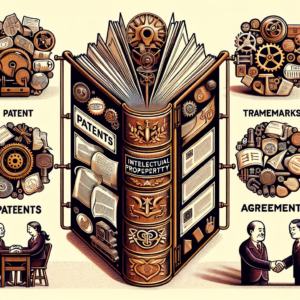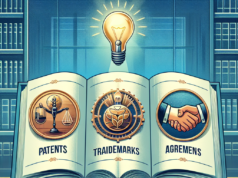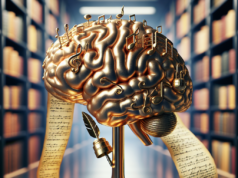
In an era where creativity and innovation are paramount, the concept of fair use has emerged as a pivotal element in the realm of copyright law. This legal doctrine allows for limited use of copyrighted material without permission from the rights holder, fostering a delicate balance between protecting creators’ rights and promoting the free exchange of ideas. However, the application of fair use is fraught with complexities and controversies that continue to shape the landscape of copyright law. This article delves into the intricacies of fair use, its historical evolution, notable disputes, the impact of technology, and its implications for creators, while also speculating on its future trajectory.
Understanding Fair Use: A Fundamental Principle of Copyright Law Explained
Fair use is a legal doctrine that permits the use of copyrighted material under certain circumstances without the need for permission from the copyright owner. It is primarily governed by Section 107 of the U.S. Copyright Act, which outlines four key factors to consider when determining whether a particular use qualifies as fair: the purpose and character of the use, the nature of the copyrighted work, the amount and substantiality of the portion used, and the effect of the use on the market for the original work. This principle is essential for fostering creativity, allowing for commentary, criticism, news reporting, teaching, and research, thereby enabling a vibrant cultural exchange while still respecting the rights of original creators.
The Historical Context: How Fair Use Evolved Through Landmark Legal Cases
The doctrine of fair use has its roots in the early 20th century, but it gained significant traction through landmark legal cases that shaped its interpretation. One of the most influential cases was Campbell v. Acuff-Rose Music, Inc. (1994), where the U.S. Supreme Court ruled that a parody of a song could qualify as fair use, emphasizing the importance of transformative use. Another pivotal case was Sony Corp. of America v. Universal City Studios, Inc. (1984), which established that time-shifting—recording television shows for later viewing—was a fair use practice. These cases, among others, have contributed to a more nuanced understanding of fair use, illustrating its adaptability to changing societal norms and technological advancements.
Key Controversies: High-Profile Fair Use Disputes That Captivated the Public
Fair use has been at the center of numerous high-profile legal disputes that have captured public attention and sparked debate. One notable case involved the artist Shepard Fairey, who used an iconic photograph of Barack Obama for his “Hope” poster without permission from the photographer, resulting in a contentious legal battle. Similarly, the case of Authors Guild v. Google (2015) raised questions about the fair use of digitized books in the Google Books project, with implications for libraries and educational institutions. These controversies highlight the ongoing tension between copyright protection and the need for creative freedom, as well as the challenges courts face in applying fair use principles to diverse contexts.
The Role of Technology: How Digital Media Challenges Traditional Fair Use Norms
The rapid evolution of technology has significantly impacted the application of fair use, presenting new challenges and opportunities. The rise of digital media platforms has facilitated unprecedented access to creative works, leading to innovative uses that often blur the lines of copyright infringement. For instance, user-generated content on platforms like YouTube and TikTok frequently incorporates copyrighted material, raising questions about whether such uses qualify as fair. Additionally, the proliferation of artificial intelligence tools capable of generating content based on existing works has further complicated the fair use landscape, prompting calls for clearer guidelines that address the unique characteristics of digital media and its implications for copyright law.
The Impact of Fair Use on Creators: Balancing Rights and Innovation in Copyright
Fair use plays a crucial role in the creative ecosystem, allowing artists, educators, and researchers to build upon existing works and foster innovation. However, the ambiguity surrounding fair use can create uncertainty for creators, who may fear legal repercussions for using copyrighted material in their work. This tension underscores the need for a balanced approach that protects the rights of original creators while also encouraging new expressions and ideas. As the creative landscape continues to evolve, it is essential for policymakers and legal experts to consider the implications of fair use on both established and emerging creators, ensuring that copyright law remains a tool for fostering creativity rather than stifling it.
Future Directions: Predicting the Evolution of Fair Use in a Changing Legal Landscape
As society continues to grapple with the implications of digital media and technological advancements, the future of fair use is likely to be shaped by ongoing legal challenges and legislative reforms. Experts predict that courts will increasingly need to address the complexities of fair use in the context of artificial intelligence, social media, and other emerging technologies. Additionally, there may be a push for clearer guidelines and definitions surrounding fair use to provide greater certainty for creators and users alike. Ultimately, the evolution of fair use will depend on the ability of the legal system to adapt to the changing landscape of creativity and innovation, ensuring that it remains a vital component of copyright law in the years to come.
In conclusion, fair use stands as a cornerstone of copyright law, embodying the delicate balance between protecting creators’ rights and fostering innovation. As the legal landscape continues to evolve in response to technological advancements and societal changes, the controversies surrounding fair use will likely persist, prompting ongoing discussions about its implications for creators and the broader cultural landscape. By understanding the historical context, key disputes, and future directions of fair use, stakeholders can better navigate the complexities of copyright law and contribute to a more equitable and dynamic creative environment.
























